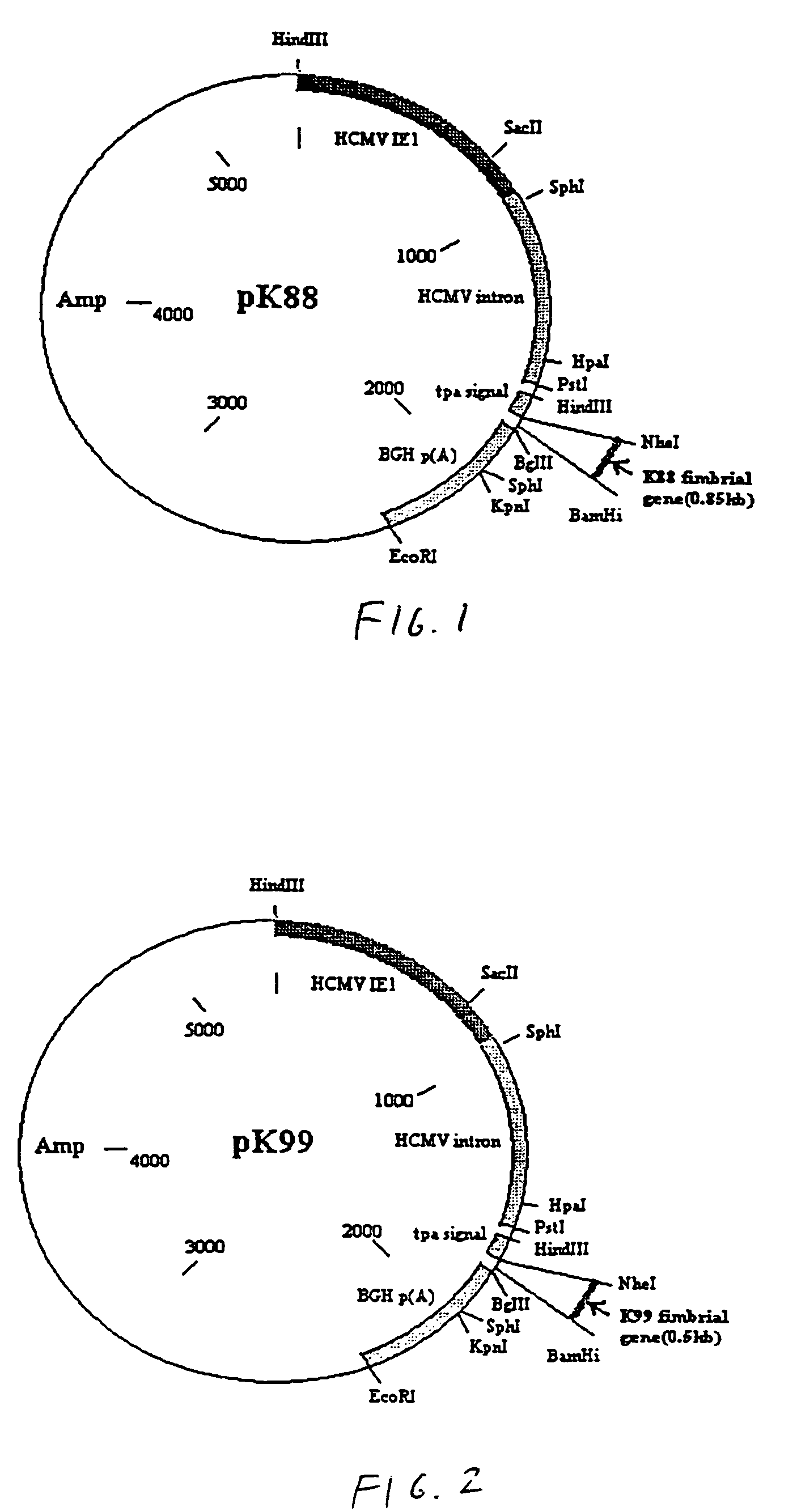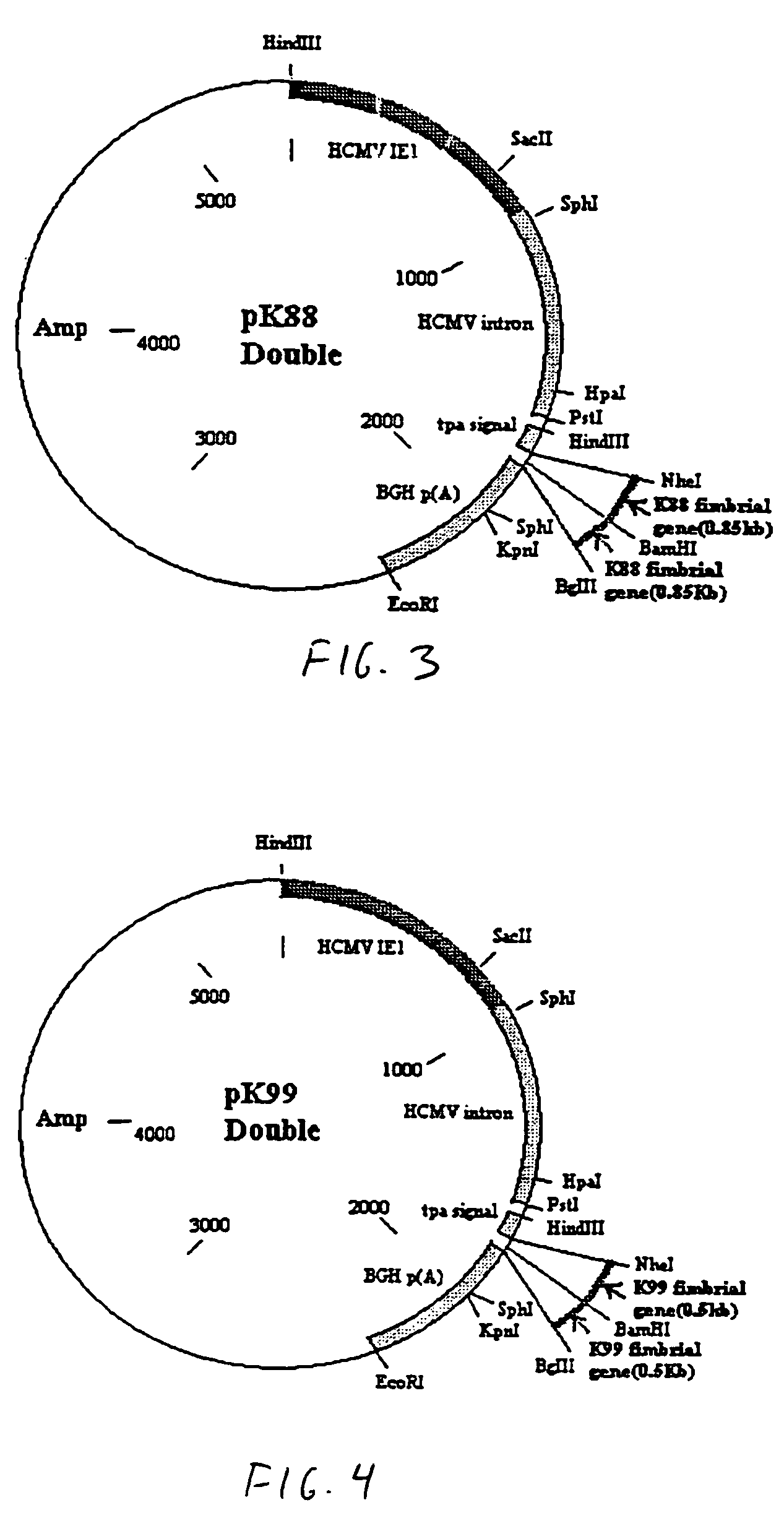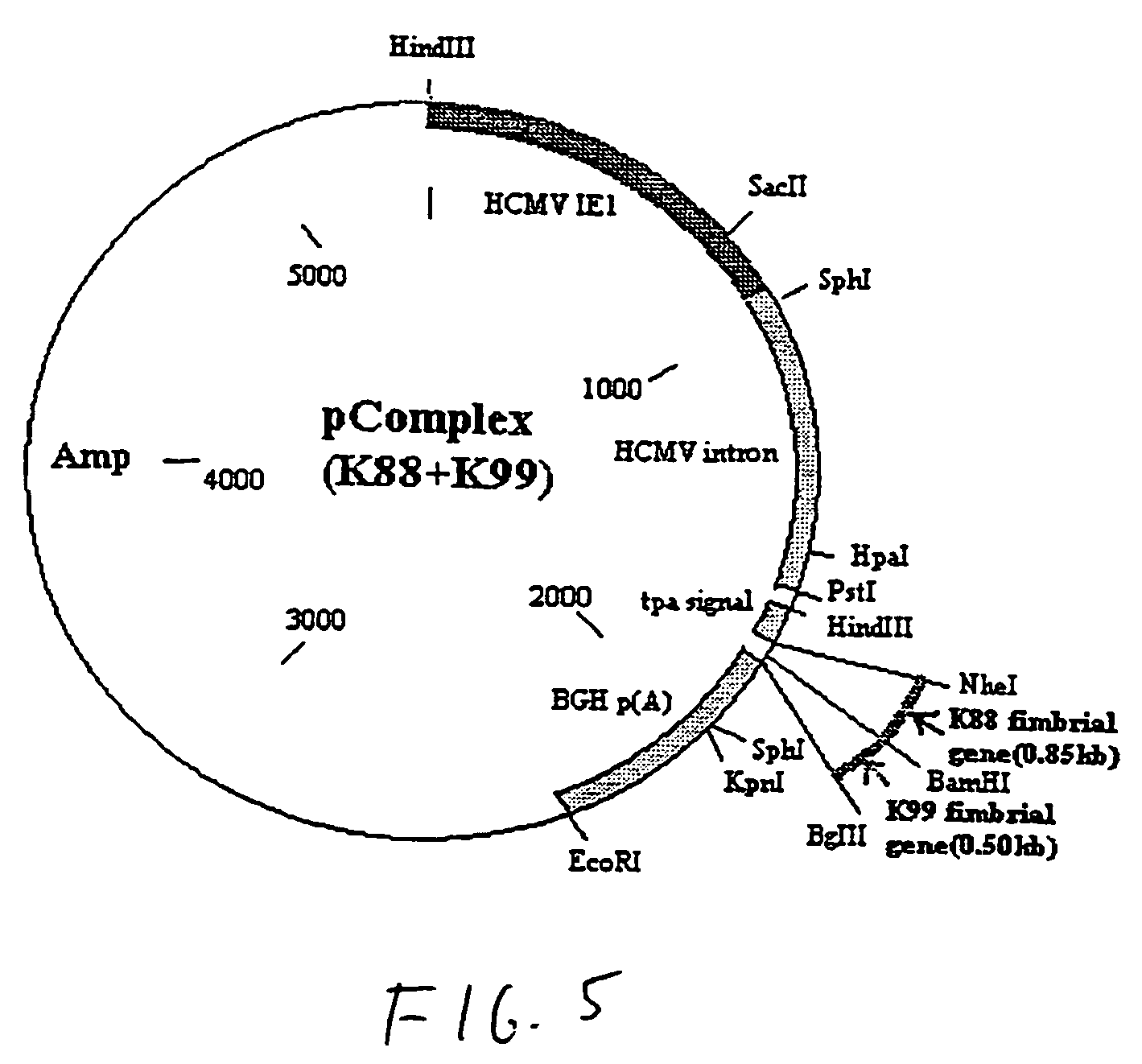Genetic vaccines for the production of chicken egg-yolk antibodies against enterotoxigenic Escherichia coli and other pathogens
a technology of enterotoxigenic escherichia coli and gene vaccine, which is applied in the field of gene vaccine for the production of chicken egg-yolk antibodies against enterotoxigenic escherichia coli and other pathogens, can solve the problems of presenting safety concerns, and affecting the production of chicken egg-yolk antibodies
- Summary
- Abstract
- Description
- Claims
- Application Information
AI Technical Summary
Problems solved by technology
Method used
Image
Examples
example i
Bacterial Strains and Growth Condition
[0041]E. coli strains I294 and I297, which were provided by Dr. R. E. Isaccson (Iowa state University, Iowa, USA), contained the plasmids used for the synthesis of the fimbrial gene. Specifically, strain I294 has the K88 ac fimbrial gene inserted into the HindIII site of a pBR322, while strain I297 has the K99 fimbrial gene inserted in the BamHI site (Isaacson, 1985, Avian Diseases 30: 28-36). Ecoli NM522 was used for transformation experiments and for isolation of plasmid DNA, as discussed below. Bacteria were grown in Luria broth or Luria agar with ampicillin (50 ug / ml).
example ii
Vaccine Construction
[0042]Referring to the drawings, vaccines were constructed using a plasmid as the vector. In this example, the plasmid is pPSLIATP (provided by Dr. Lorne Babiuk, Veterinary Infectious Disease Organization, University of Saskatchewan, Saskatoon, Canada). The vector includes a multiple cloning site for insertion of coding sequences as described below downstream of the human cytomegalovirus (hCMV) intermediate early promoter. In addition, between the multiple cloning site and the hCMV promoter is an intron for promoting transport of the transcribed mRNA out of the nucleus. It is of note that the intron is upstream of the multiple cloning site so that protein synthesis is not affected by the presence of the intron. Downstream of the multiple cloning site is a polyadenylation sequence from bovine growth hormone. Thus, as a result of this arrangement, coding sequences inserted into the multiple cloning site will be transcribed by the hCMV promoter and polyadenylated. I...
example iii
Purification of Fimbriae
[0045]E. coli strains I294 and I297 were cultured for 36 h at 37° C. in 1-L of LB broth with 25 ug / ml of ampicillin. Cultures were centrifuged at 4° C. and 3000 g for 15 min, and the pellets were resuspended with 5-ml of PBS (pH 7.2). The precipitates were heated to 60° C. in a water bath for 30 min to release the fimbriae from the bacteria and, while still hot, were blended for 10 min at high speed using an IKA-ULTRA-TURRAX T25 homogenizer (Jacke & Kunkel GmbH & Co IKA Labortechnik, Staufen, Germany). The insoluble bacteria residue was removed by centrifugation (14,000 g, 4° C., 15 min), and after filtering through a 0.45-um membrane filter (Millipore Corp, Milford, Mass. 01757, USA). Citric acid (2.5%) was added to the supernatant to a pH of 4.0 to precipitated the fimbrial. The fimbriae were allowed to precipitate at 4° C. for 2 h and then collected by centrifugation (14,000 g, 4° C., 15 min). The precipitated fimbriae were resuspended and dissolved in 5-m...
PUM
| Property | Measurement | Unit |
|---|---|---|
| pH | aaaaa | aaaaa |
| pH | aaaaa | aaaaa |
| volume | aaaaa | aaaaa |
Abstract
Description
Claims
Application Information
 Login to View More
Login to View More - R&D
- Intellectual Property
- Life Sciences
- Materials
- Tech Scout
- Unparalleled Data Quality
- Higher Quality Content
- 60% Fewer Hallucinations
Browse by: Latest US Patents, China's latest patents, Technical Efficacy Thesaurus, Application Domain, Technology Topic, Popular Technical Reports.
© 2025 PatSnap. All rights reserved.Legal|Privacy policy|Modern Slavery Act Transparency Statement|Sitemap|About US| Contact US: help@patsnap.com



